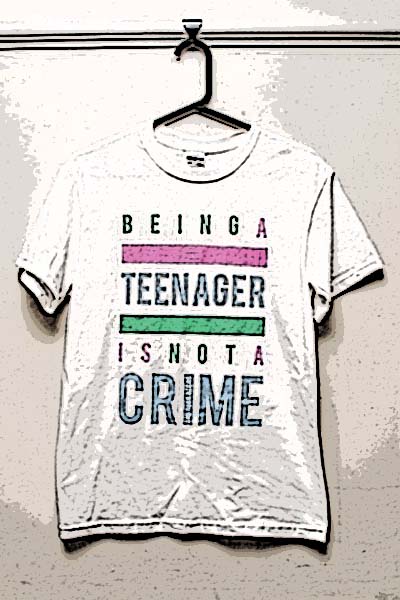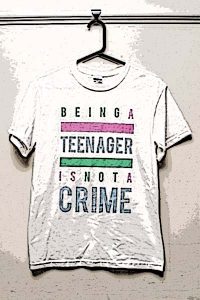Being A Kid is Not a Crime-No Daytime Curfew!

Pertinent Links About Curfews Nearby because of Riots and Looting
Note: this is not the intended content of this post, which spoke to the issue of juvenile daytime curfews, but since people are looking for information about the recent (May 31, 2020 onward) curfews, I’ll post that information here.
Milpitas: At this time, Milpitas has not issued a special curfew regarding night time activities by adults. The Nighttime Curfew Law for Minors in Milpitas remains in effect.
San Jose: 8:30 p.m. to 5 a.m., ending on June 7 or until further notice.
Santa Clara: 8:30 p.m. to 5 a.m., until future notice.
San Francisco: 8 p.m. to 5 a.m.
Walnut Creek: 8 p.m. until 5 a.m., ending June 8.
Danville: 10 p.m. until 5 a.m., until further notice.
Pleasant Hill: 9:30 p.m. until 5:30 a.m., until further notice.
San Leandro: A curfew imposed late Sunday night was in effect until 5 a.m.
Please, No Daytime Curfews for Kids
 There’s movement in this city and state to have a daytime curfew which would ban young people of school age from being out and about during school hours. I remember how this worked in Santa Cruz when I was a 17 year old student at the University of California. I had gone into town to shop, and was walking down the sidewalk when a patrol car pulled up and a policeman jumped out of the car and spread his arms out to prevent me from continuing my stroll.
There’s movement in this city and state to have a daytime curfew which would ban young people of school age from being out and about during school hours. I remember how this worked in Santa Cruz when I was a 17 year old student at the University of California. I had gone into town to shop, and was walking down the sidewalk when a patrol car pulled up and a policeman jumped out of the car and spread his arms out to prevent me from continuing my stroll.
“What’s the problem, officer?” I replied politely, as my parents had taught me.
“You appear to be a truant!” he exclaimed. “Let me see your identification.”
I showed him my license, which did indeed prove I was 17. I did not have a student body card, as they had not yet been issued, but I explained I was a University student between classes, and was just shopping for my dorm room, spending a sunny fall day blowing my parents’ money on Pacific Ave.
“There’s a daytime curfew law in Santa Cruz for anyone under 18. I’ll have to take you in until you can prove you are a university student.”
He did indeed take me in and called up the provost, who vouched I was a college student, and that was that. But a day was spoiled and one young, blond girl suddenly knew what it felt like to be thought to be a criminal, based only on her looks, just like a black youth in “the wrong part of town.”
These days we homeschool our teenaged son. One Tuesday we had both worked hard so I sent him on his bike to McDonalds to get some burgers for us. No problem. If a daytime curfew goes into affect, he could be picked up. I enjoy going to technical fairs at the San Jose Convention Center and dropping him off at the Tech Museum while I take the cell phone in case he needs me. In San Jose he could be picked up as truant just for being a kid alone in a museum. I do have a card on him that says he’s a homeschooler, and he tends to blend in with kids on field trips, so there hasn’t been a problem… yet.
Neighbors, let’s not make something criminal for youth that isn’t criminal for adults. It’s not much of a step to making it illegal for adults not to be in a work place during work hours! Don’t make the library and parks “off limits” to the homeschoolers in this community during the day. We depend on these services, and we’re out learning in the community during the day while other teens are in school. I know that a few young people have crossed the line and are under supervision by parole officers. These few that have blown the trust of the community should be the only ones to suffer restrictions. But their number is few, the rest don’t need daytime curfew. We are all – youth and adults – free in this country until we break a law. Let the laws already on the books for criminal behavior, such as shoplifting, be what guides police for stopping “suspects,” not just “skipping school.”
Instead, let’s give our youth plenty of interesting things to do in school and out of school. Engage them in community activities, provide more extensive programs for At-Risk and just your usual, garden-variety kids. The Recreation Department needs to have a wider variety of activities for youth of Junior High age. Too many non-sports classes are closed for 11-15 year olds. Why shouldn’t dog obedience be open to youth? Tiger Woods certainly proved that you need to start young if you want to learn golf. Classes should only require an interest in the subject matter and basic physical requirements.
Until we have message board capability, I am going to attempt to use this “feature” capability to introduce topics for debate. People wishing to add constructive messages to the debate may send me email at info@gomilpitas.com with the subject matter the title and dateline of the feature, in this case Being a Kid is Not a Crime 05/13/97. As messages are collected, and you wish to refer to someone else’s message, include the writer and dateline, as well, in the body of the email.
By Ann Zeise
Pertinent Links About Curfews in Milpitas
Milpitas Board of Education
Attend Board of Education meetings to find out how the schools plan to deal with daytime curfew or voice your opinion. You can also watch it on cable channel 15, 7 p.m., second and fourth Tuesday evenings.
Curfew Law for Minors in Milpitas
V-8-1.00 It shall be unlawful for any minor to remain or loiter upon any street, sidewalk, park or other public place or place open to the public within the City of Milpitas between the hours of 10 p.m. and 5 a.m. of the following day except as hereafter provided.
Pertinent Links About Curfews in Other Nearby Cities
Revised Palo Alto Curfew Ordinance
Here’s how the law reads in neighboring Palo Alto. This what we want in Milpitas?
Overview About Curfews for Children
Children and the Curfew Law
Currently, there is no law in California which sets out a curfew that would apply to all youngsters in the state. Instead, these laws or ordinances are typically passed and enforced by local municipalities, cities, and townships.
The Impact of Juvenile Curfew Laws in California
Statistical analysis provides no support for the proposition that stricter curfew enforcement reduces youth crime either absolutely or relative to adults, by location, by city, or by type of crime. By Dan MacallairMike Males, Justice Policy Institute.
